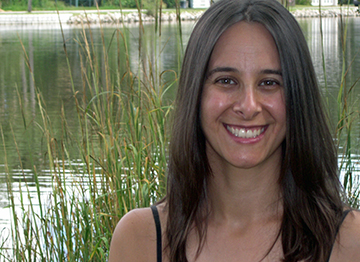Articles, Evaluations, Uncategorized
The Art of the Yoga Intake Interview
Joy Esler, AP, MMQ, RYT shares the SOAP method for conducting effective intake interviews. These intake interviews are key for new clients, but also for your case study requirements for the 500HR and 1000HR training modules. Learn the art of assessing clients and making a treatment plan below.

Intake Interviews for New Clients & 500HR or 1000HR Case Studies
As part of the 500 hours and 1,000 hours Yoga Medicine Training, teachers are required to complete one case study for every module completed. Included in this case study is an intake and evaluation using SOAP. SOAP (Subjective, Objective, Assessment, Plan) is a note taking technique used by health care professionals to document client information.
S is for Subjective
Firstly, the S of SOAP represents information from the client related to his or her chief complaint. To gather this information, a common acronym is used which is known as OPQRST. An explanation of OPQRST follows.
- O is Onset or when and how the chief complaint occurred
- P is Palliation or what makes the chief complaint better or worse. Examples may include, yet are not limited to, activity, posture, palpitation, and rest.
- Q is Quality or the type of sensation experienced. Examples may include, yet are not limited to, sharp, dull, ache, tingling, radiating, and numb.
- R is Region or the area of the body affected
- S is Severity or the pain on a scale of one to 10
- T is Time or when the chief complaint occurs. Examples may include, yet are not limited to, morning, day, afternoon, night, all day, and chronologically how the chief complaint has changed.
Additionally, the Subjective portion may include other symptoms; previous and current treatments; medications and supplements; surgeries; review of the body’s systems including heart, lungs, digestion, urination, reproduction, and eyes, ears, nose and throat; and aspects of one’s health and lifestyle such as sleep, energy, water, diet, temperature, stress, work, family, and emotions.
O is for Objective
Secondly, the O of SOAP represents information based on the teacher’s observations of the client. These observations may include posture; Active Range of Motion (AROM); palpation areas of tenderness, inflammation, and trigger points; and tests of Resisted Range of Motion (RROM), Passive Range Of Motion (PROM), and yoga poses.
A is for Assessment
Thirdly, The A of SOAP represents information from a referring healthcare practitioner and the related medical diagnoses. The Assessment portion also comprises the yoga focal points, and why those yoga aspects have been incorporated.
P is for Plan
Lastly, The P of SOAP represents multiple components. Some of these components are the focus of the yoga session including key poses, alignment points, and cues; the frequency and length of yoga sessions; and the recommended self-care, and home yoga and / or meditation practice. Additionally, the Plan portion identifies the client’s comments or response to the session; any referrals or recommendations to health care practitioners; and the plan for the client’s next session.
Tips for Interviewing
Yet, how does one effectively interview a yoga client for this intake and evaluation? We use 10 tips to practice the art of interviewing.
- Ask one question at a time
- Use clear, simple, open ended questions
- Maintain eye contact while writing the notes
- Write the client’s responses using their words not yours
- Be present
- Be a compassionate, non-judgmental listener
- Use this as an opportunity to build rapport
- Do not be reactive with your facial expressions or words
- Remember that people just want to be heard
- Be open to the client changing the order of your prepared questions as the client responds to other questions
- Use blank paper or the Yoga Medicine Intake form to record the information
Ultimately, as Yoga Medicine Teachers, we are operating on two levels during this intake and evaluation. We are on one level asking questions and taking notes, and on another building rapport. And our resulting SOAP notes have dual purposes. First is to provide an accurate record of the client’s current situation, and the second is to benchmark for the client’s progress.
About the Author
 Joy is a Licensed Acupuncturist and Chinese Herbalist, Master of Medical Qigong, and Registered Yoga Teacher. After experiencing dramatic healing with acupuncture, Joy decided her life’s path was to help people on their own road to health and healing. Joy completed her Master’s Degree in Acupuncture and Chinese Herbs. Since then, she has offered holistic services, yoga, and workshops at her active business Lotus Center of Healing, LLC.
Joy is a Licensed Acupuncturist and Chinese Herbalist, Master of Medical Qigong, and Registered Yoga Teacher. After experiencing dramatic healing with acupuncture, Joy decided her life’s path was to help people on their own road to health and healing. Joy completed her Master’s Degree in Acupuncture and Chinese Herbs. Since then, she has offered holistic services, yoga, and workshops at her active business Lotus Center of Healing, LLC.
In 1999, Joy began to practice yoga. After several years of practicing yoga, she started to teach yoga in 2002. Joy is certified in Kripalu yoga. In 2015, Joy completed her 500-hours Yoga Medicine Teacher Training.
Currently, Joy is working on her Doctoral degree in Medical Qigong – the eldest Chinese medicine modality. Her dissertation focuses on how mental, emotional, and spiritual levels impact one’s health, and the ability to heal oneself or not.
Joy’s strengths lie within her open heart and that she is truly a joy with an infectious laugh. She utilizes multiple modalities to support her clients’ healing including acupuncture, Chinese herbal medicine, lifestyle and nutritional guidance, medical qigong and yoga. Joy provides individualized treatments and education that promote the body, mind, spirit, and heart to heal itself.












